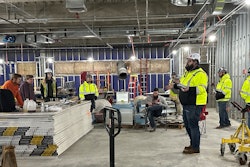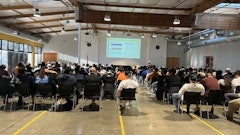
What causes contractors to NOT plan, or plan more thoroughly? The reasons are many but a few that I’ve witnessed as being the biggest contributors for the planning “challenged contractor” includes:
- “Got to get to the next job…NOW!”
- “We have too many jobs to really plan out the execution for each project.”
- “I’ve got experienced guys…they’ll figure it out.”
- “100% of the projects are going to change 100% of the time anyway.”
- “We do small jobs; I’d spend more time planning than it would to just do the job.”
As true as some of the reasons above be, a more prominent reason I have discovered is that many contractors have never really learned how to plan. Oh sure, anyone can write down the things that will be done to execute a project, and this is a partial attempt to plan, the truth is that most contractors have simply never been educated on the components of planning. Let’s explore the six pieces of planning that can put greater success into your next project.
TIME is the most important component to planning. Planning is a forward-projecting exercise, setting out time requirements and deadlines, which are the very crux of planning. Time can be represented as project time, the next week of activities, monthly scheduling, etc.
WORK TASKS are the actual hands-on tasks that must be identified, prioritized, and set in order, for the project to be completed right the first time.
PEOPLE are the human resource that develops, executes, supports, and monitors the plan and project fulfillment. By planning, leaders can leverage their people with clarity and confidence, placing their people in the best position to be effective, productive, and safe! It may be as simple as adding one more finisher to a concrete project or as complicated as figuring out how to have your best equipment operator on two projects on the same day.
RESOURCES include the obvious: materials, equipment, tools, information, people, etc. Any plan needs to clearly assess what resources are needed, before the project begins, to account for all needed resources, thus strengthening the fact that we have all needed resources to complete the project the right way the first time. Never allow your crews to leave to a project without a clear plan on what is needed, are the items on the trucks and trailers, and are all the mechanical resources in working order.
NEEDS/EXPECTATIONS are seldomly documented in a plan, yet they are crucial to planning. Both can apply to recognizing what your needs or expectations are to complete the project, what the needs or expectations are of your crew leader and members, and who are executing the plan. Even your customer has needs or expectations that may be associated with the completion of the project, both quality and time requirements. What are your needs or expectations for your crew on completing work? What is expected or needed from your customers…for you as it relates to the project?
COMMUNICATION AND NETWORKING drives on-going communication between all participants and recipients of a project. Calling to confirm or to set-up a material delivery is obviously needed YET I have witnessed contractors who assume that the asphalt, concrete, or sealcoat plant are up and operating. Networking is often needed when planning as it provides you faster access to a change that is suddenly confronting your schedule; “it’s who you know sometimes that is more critical than what you know.”
So much of planning today is executed on an app or on a software, yet all the same six components listed above need to be considered when planning and on whatever “platform” you use when planning. There is an old axiom, “Failing to Plan is Planning to Fail!” It still applies today!
Do not fail to plan as you tackle projects of all sizes and complexity. Sometimes it’s the smallest project that was supposed to be your “slam dunk” project that winds up costing you three times what it should have cost to complete the job. There are enough “hiccups” that can show up on any project, planning helps to mitigate many of the surprises while also giving you an even faster turn-around time toward changing directions on a solution without it costing you too much in time and resources.
Here's to planning success!




















